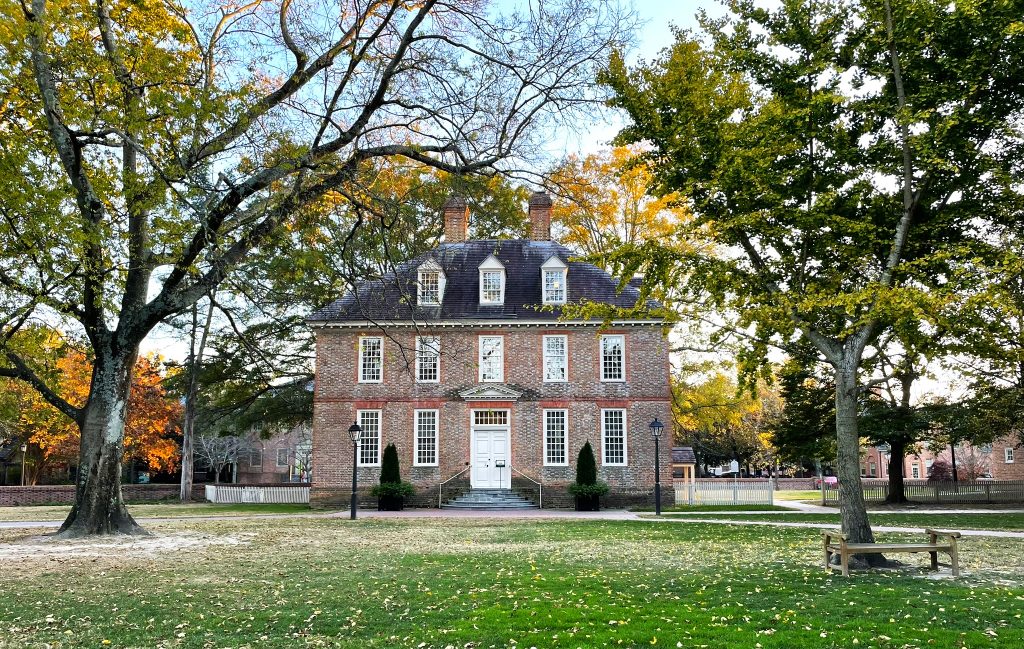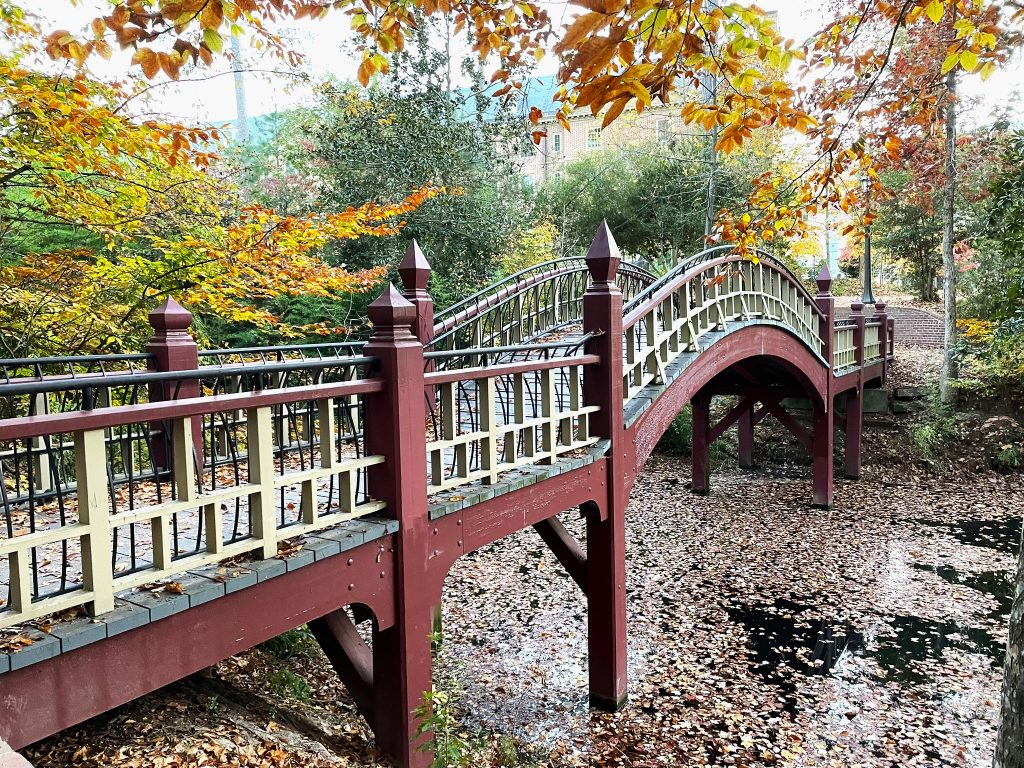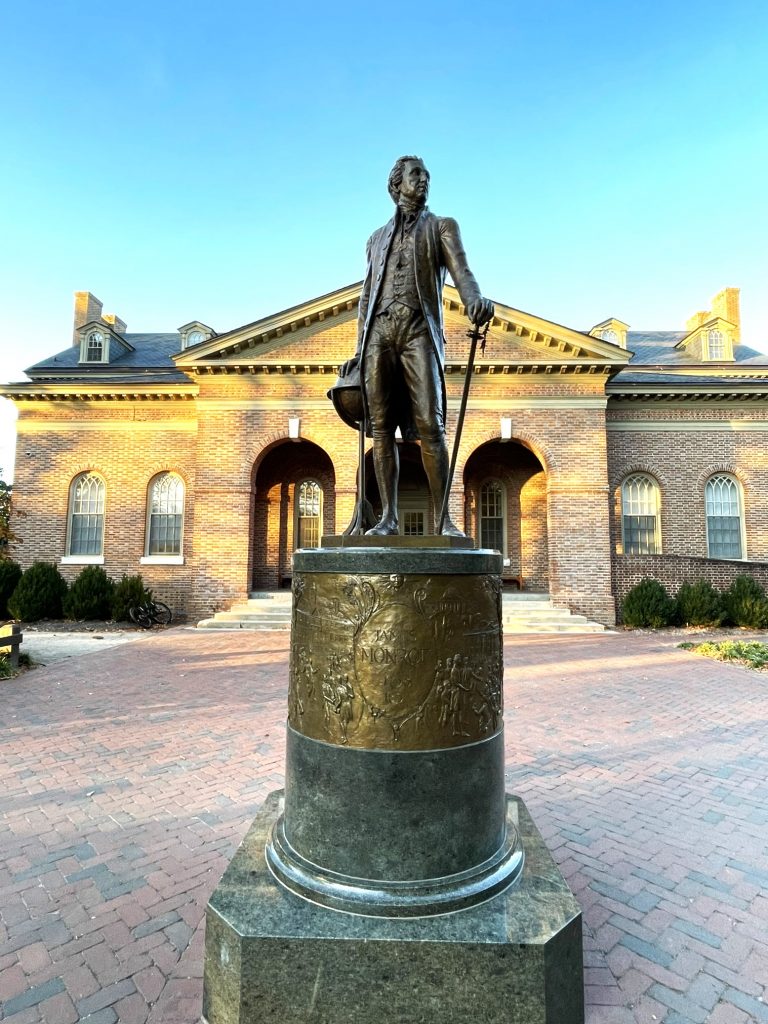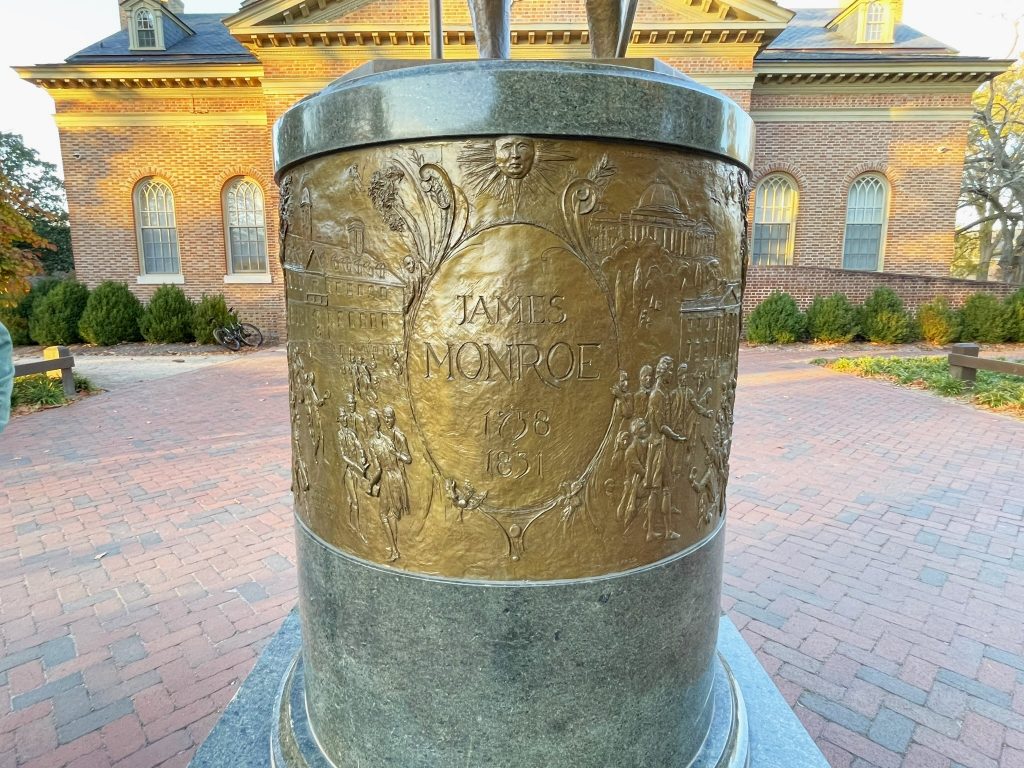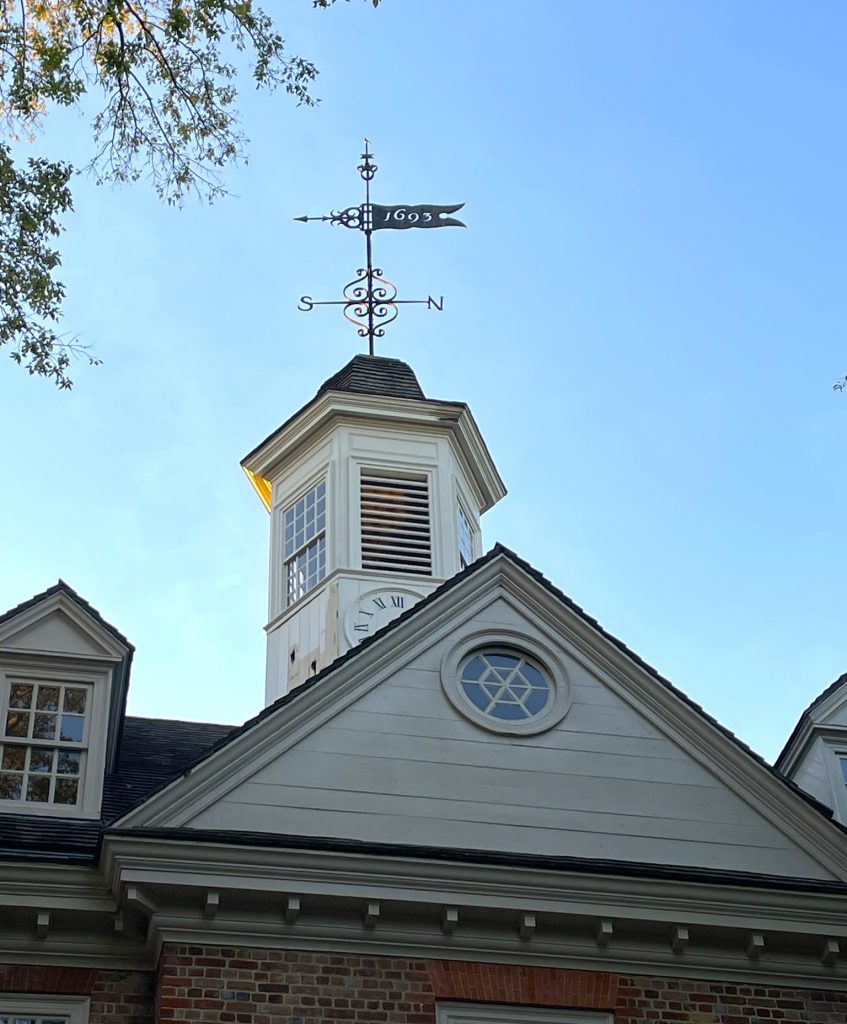
We went to the College of William & Mary in Williamsburg, Virginia, to see the architecture, and a couple of presidential statues as a bonus.
W&M was founded in 1693, making it one of the oldest in the United States, and the ninth-oldest English-speaking higher education institution in the world.
It is named in honor of King William III and Queen Mary II.
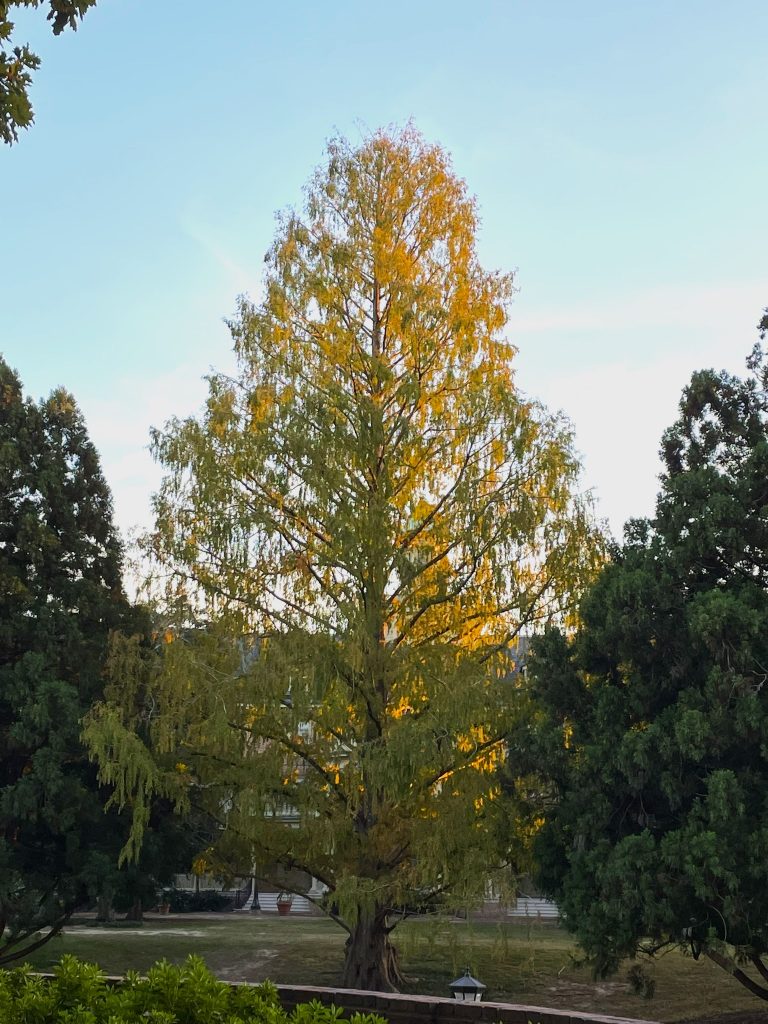
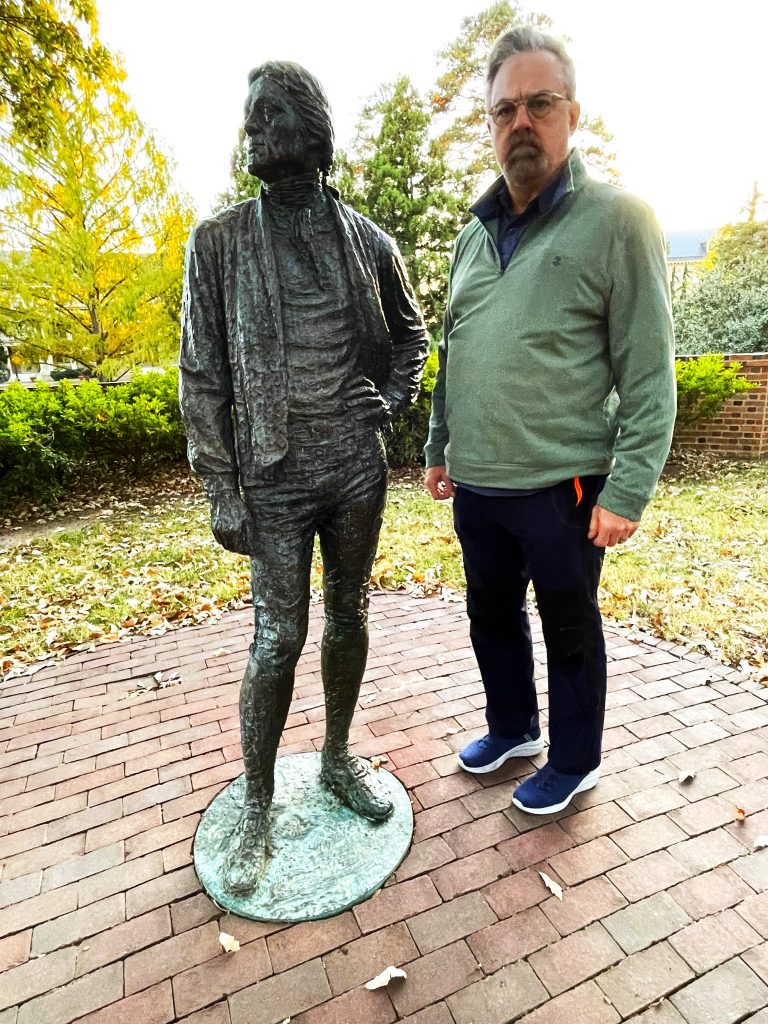
United States Presidents Thomas Jefferson, James Monroe, and John Tyler were all educated at W&M, along with other familiar names in US history: Peyton Randolph, John Marshall, Henry Clay, and Winfield Scott.
George Washington even obtained his surveyor’s license from W&M in 1749, though he never actually attended the school. Because of these associations, its nickname is “the Alma Mater of the Nation.”
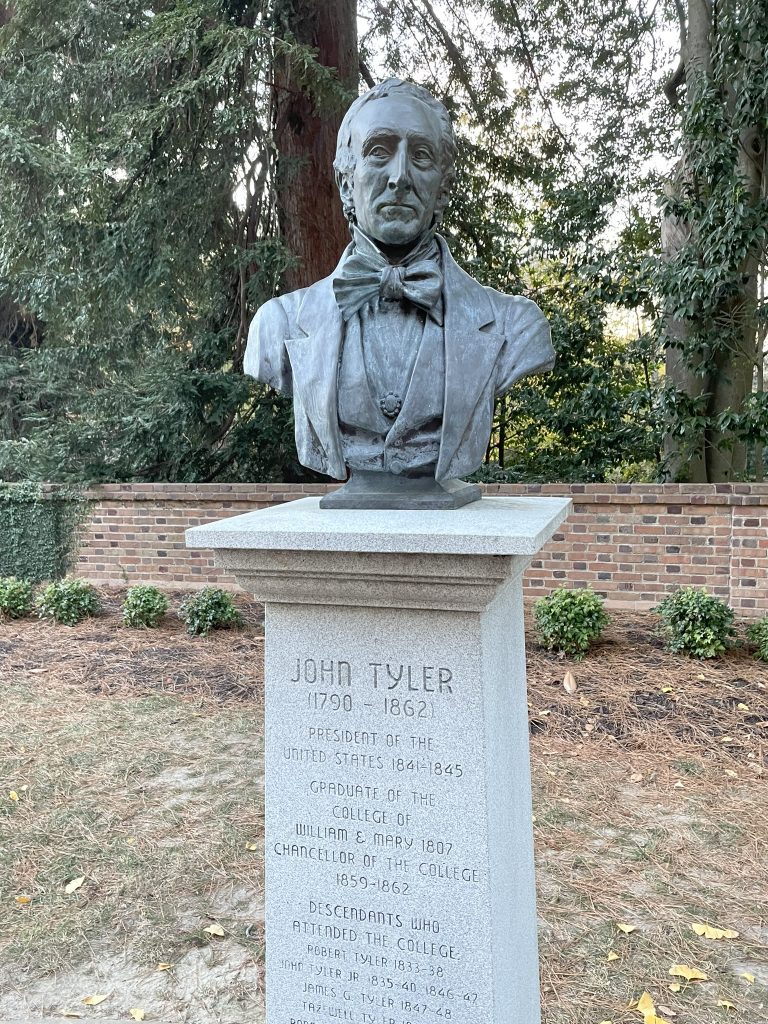
The Georgian-style Wren Building is attributed to the noted English architect Sir Christopher Wren, whose name is attached to a long list of remarkable buildings (check it out on Wikipedia). However, the connection is a bit dubious, I was disappointed to learn.
Construction was completed on the original building in 1700, but it was destroyed in a fire. In 1716 a replacement was built, and in 1724 a history was written that said the original design was “first modelled by Sir Christopher Wren.” But there is no actual documentation proving this, and Wren never even visited America!
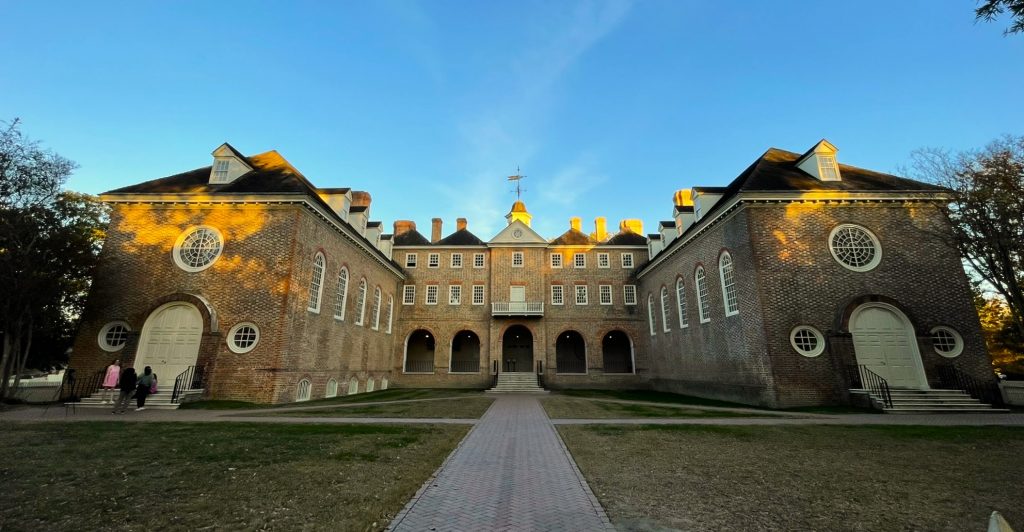
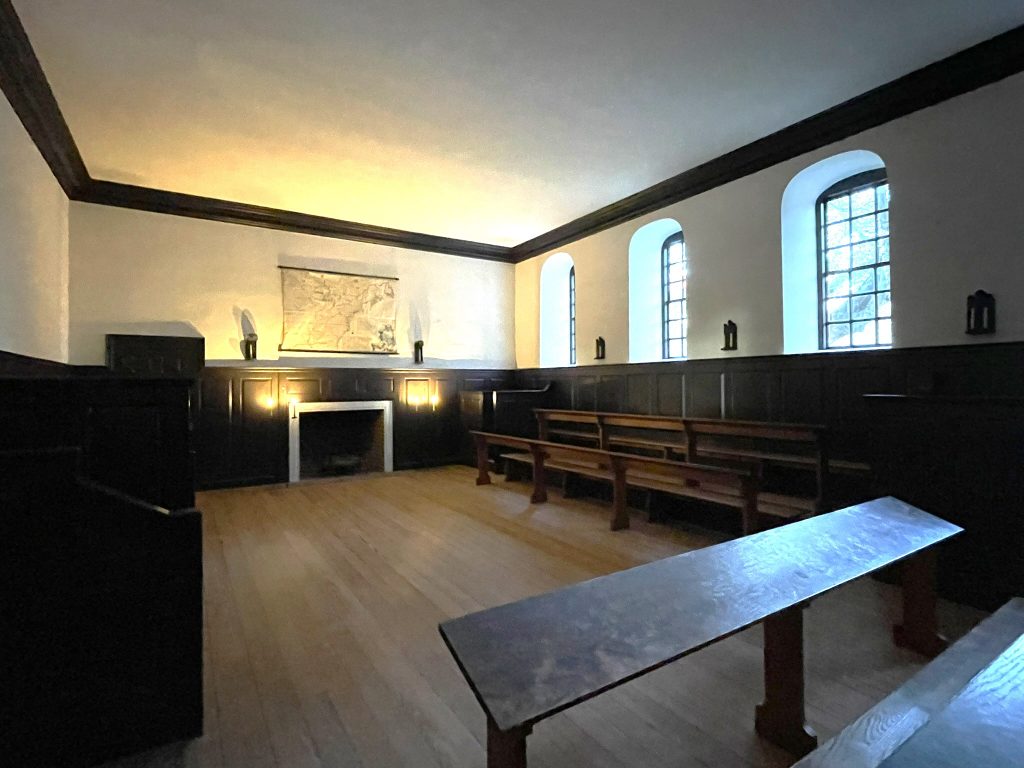
The building then burned twice more, in 1859 and 1862 (the latter intentionally set during the Civil War), and with each rebuilding its appearance was altered – including adding Italianate towers at one point. Though the brick exterior walls survived the fire and were incorporated into the new buildings, at some point it seems a stretch to say the current building dates to 1700.
From 1928-31 the building was restored to its supposed earlier appearance as part of the Rockefeller creation of Colonial Williamsburg.
The college sits on 1,200 acres, primarily of woodlands and a lake, and was named one of the most beautiful college campuses by Travel+Leisure in 2011.
